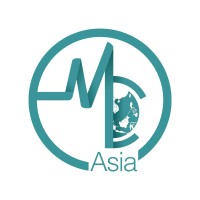The concern surrounding birth control pills and their association with venous thromboembolism risk (VTE risk) has been a recurring topic among healthcare professionals and patients alike.
Analysing various studies, this article aims to provide a comprehensive insight into the extent of blood clot risks birth control pills may pose.
Birth Control Pills: A Brief Overview
Birth control pills, often called oral contraceptives, represent a popular method for preventing unwanted pregnancy. They consist of synthetic forms of hormones estrogen and progestin, which inhibit ovulation and thus prevent fertilisation. However, they have come under scrutiny for potential health risks they may pose, with venous thromboembolism being a prominent concern.
Understanding the Risks
When considering the incidence of VTE among users of oral contraceptives, the statistics are reassuring. It is reported to be approximately 0.06 per 100 pill-years, a figure significantly lower than the VTE rate during pregnancy and the post-partum period, which stands at 0.2 per 100 years at risk. This provides an important perspective on the relative safety of oral contraceptives.
Historical Evidence
Early in their history, oral contraceptives were noted to be linked with an increased risk of VTE. The first documented case of VTE associated with oral contraceptives dates back to 1961 when a woman was prescribed a form of oral contraception. This historical evidence highlights the significance of continuing research and vigilance regarding the safety of contraceptive methods.
Geographical Usage
The utilisation of contraceptives among women of reproductive age varies significantly across different regions. In Europe and North America, 17.8% of women use contraceptives, while in Australia and New Zealand, this figure is 21.9%.
In contrast, East and Southeast Asia report a lower usage rate of 5.2%, with South Korea at 3.3%. These geographical differences highlight the need for tailored healthcare strategies and awareness campaigns to address contraceptive choices and associated risks effectively.
Types of Venous Thrombosis
Venous thrombosis, a condition characterized by blood clot formation in the veins, can manifest in various forms when associated with hormonal contraception use. The primary types of venous thrombosis related to hormonal contraception include Deep Vein Thrombosis (DVT), Pulmonary Emboli (PE), and Cerebral Venous Thrombosis (CVT):
Deep Vein Thrombosis (DVT)
DVT is a serious condition in which a clot forms in a deep vein, usually in the leg. Hormonal contraceptives, particularly those containing estrogen, have been linked to an increased risk of DVT.
For instance, different hormonal contraceptives can exhibit variations in their associated risk. Oral contraceptives containing levonorgestrel have shown to increase the risk of venous thrombosis (VT) by a range of 2.79-4.07 times, while other oral hormonal preparations have been associated with a VT risk increase ranging from 4.0 to 48.6 times.
Pulmonary Emboli (PE):
This condition occurs when a blood clot, often originating from a DVT, travels to the lungs and blocks a pulmonary artery. Hormonal contraception has also been linked to an increased risk of PE, especially in formulations containing estrogenic components.
Cerebral Venous Thrombosis (CVT):
CVT is a type of stroke that results from a blood clot in the dural venous sinuses, which drain blood from the brain. Hormonal contraceptives, especially those containing estrogen, increase the risk of CVT.
The type of hormone, its dosage, and the route of administration can significantly alter the risk of venous thrombosis associated with hormonal contraception.
For example, etonogestrel/ethinyl estradiol vaginal rings increase the VT risk by 6.5 times, whereas norelgestromin/ethinyl estradiol patches show a 7.9 times increase. On the other hand, etonogestrel subcutaneous implants raise the VT risk by only 1.4 times, and depot-medroxyprogesterone increases it by 3.6 times.
Weighing the Benefits Against Risks
Despite the associated VTE risk, birth control pills remain a widely used contraceptive method due to their efficacy, cost-effectiveness, and additional non-contraceptive benefits. It’s imperative to have a personalised discussion with healthcare professionals to weigh the risks against benefits, considering individual health circumstances and preferences.
Beyond The Surface: Other Contributing Factors
Apart from hormonal contraception, there are several other factors that can contribute to the risk of Venous Thromboembolism (VTE), and a holistic approach is crucial in evaluating this risk. Here are some of these factors:
1. Genetic Predispositions
- Certain genetic mutations such as Factor V Leiden and Prothrombin G20210A Gene Mutation are known to increase the risk of VTE.
- A family history of VTE, especially in a first-degree relative (parent, sibling), indicates a genetic predisposition to VTE.
2. Obesity
- Obesity is a well-recognised risk factor for VTE.
3. Sedentary Lifestyle and Immobility
- Immobility, such as bed rest and long-distance travel, can contribute to the risk of VTE.
- A sedentary lifestyle can also increase the risk of VTE as it can lead to reduced blood flow, which may promote clot formation.
4. Other Factors
- Age: Older age is a known risk factor for VTE.
- Male Sex: Males are at a higher risk for VTE compared to females.
- Smoking: Smoking is associated with an increased risk of VTE.
- Long-Haul Flights: Extended periods of immobility during long flights can increase the risk of VTE.
- Residual Venous Thrombosis: Previous episodes of venous thrombosis can also increase the risk of future events.
Shedding Light On Future Research Directions
The need for further research to ascertain more precisely the relationship between different oral contraceptive formulations and VTE risk is evident. Such investigations could pave the way for safer contraceptive options, enhancing women’s health and well-being.
References
- Solymoss, S. (2011, November 7). Risk of venous thromboembolism with oral contraceptives. Canadian Medical Association Journal; Canadian Medical Association. https://doi.org/10.1503/cmaj.111614
- Morimont, L., Haguet, H., Dogné, J., Gaspard, U., & Douxfils, J. (2021, December 9). Combined Oral Contraceptives and Venous Thromboembolism: Review and Perspective to Mitigate the Risk. Frontiers in Endocrinology; Frontiers Media. https://doi.org/10.3389/fendo.2021.769187
- Vandenbroucke, J. P., Rosing, J., Bloemenkamp, K. W., Middeldorp, S., Helmerhorst, F. M., Bouma, B. N., & Rosendaal, F. R. (2001, May 17). Oral Contraceptives and the Risk of Venous Thrombosis. The New England Journal of Medicine; Massachusetts Medical Society. https://doi.org/10.1056/nejm200105173442007
- Jang, Y. S., Lee, E. S., & Kim, Y. K. (2021, July 15). Venous thromboembolism associated with combined oral contraceptive use: a single-institution experience. Obstetrics & Gynecology Science; Indonesian Society of Obstetrics and Gynecology. https://doi.org/10.5468/ogs.20374
- Keenan, L., Kerr, T., Duane, M., & Van Gundy, K. (2018, November 1). Systematic Review of Hormonal Contraception and Risk of Venous Thrombosis. The Linacre Quarterly; Maney Publishing. https://doi.org/10.1177/0024363918816683
- Moeindarbari, S., Beheshtian, N., & Hashemi, S. (2022, July 4). Cerebral vein thrombosis in a woman using oral contraceptive pills for a short period of time: a case report. Journal of Medical Case Reports; BioMed Central. https://doi.org/10.1186/s13256-022-03473-w
- Pastori, D., Cormaci, V. M., Marucci, S., Franchino, G., Sole, F., Capozza, A., Fallarino, A., Corso, C., Valeriani, E., Menichelli, D., & Pignatelli, P. (2023, February 5). A Comprehensive Review of Risk Factors for Venous Thromboembolism: From Epidemiology to Pathophysiology. International Journal of Molecular Sciences; Multidisciplinary Digital Publishing Institute. https://doi.org/10.3390/ijms24043169
- Risk Factors for Venous Thromboembolism (VTE). (2023, October 23). www.heart.org. https://www.heart.org/en/health-topics/venous-thromboembolism/risk-factors-for-venous-thromboembolism-vte#:~:text=The%20risk%20is%20greater%20in,Twin%20gestation%20Older%20maternal%20age














